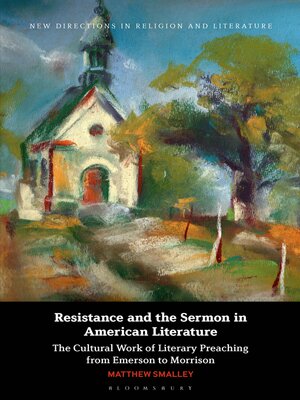Resistance and the Sermon in American Literature
ebook ∣ The Cultural Work of Literary Preaching from Emerson to Morrison · New Directions in Religion and Literature
By Matthew Smalley

Sign up to save your library
With an OverDrive account, you can save your favorite libraries for at-a-glance information about availability. Find out more about OverDrive accounts.
Find this title in Libby, the library reading app by OverDrive.



Search for a digital library with this title
Title found at these libraries:
| Library Name | Distance |
|---|---|
| Loading... |
With seemingly obsessive regularity, American authors, from the mid-nineteenth century to the present, evoke the sermon at culturally loaded moments in their works, deploying the form to underscore the cultural work they imagine their novels or poetry to perform. Examining this longstanding tradition of "literary preaching," this book draws on literary applications of design theory to provide a nuanced account of American literature's complex, anxious, and persistent engagement with the Protestant sermon.
Analyzing literary preaching as a transhistorical form that simultaneously attracts and repels authors, Smalley demonstrates how major US writers–Ralph Waldo Emerson, Walt Whitman, Nathaniel Hawthorne, Rebecca Harding Davis, William Faulkner, Zora Neale Hurston, and Toni Morrison–have subverted the sermon's predominantly religious content in order to reimagine profound moments of reform in a political, cultural, and aesthetic mode. This study elucidates new lines of literary kinship, offers fresh readings of familiar works, and establishes literary preaching as an undertheorized but significant tradition in American literature.
Analyzing literary preaching as a transhistorical form that simultaneously attracts and repels authors, Smalley demonstrates how major US writers–Ralph Waldo Emerson, Walt Whitman, Nathaniel Hawthorne, Rebecca Harding Davis, William Faulkner, Zora Neale Hurston, and Toni Morrison–have subverted the sermon's predominantly religious content in order to reimagine profound moments of reform in a political, cultural, and aesthetic mode. This study elucidates new lines of literary kinship, offers fresh readings of familiar works, and establishes literary preaching as an undertheorized but significant tradition in American literature.







